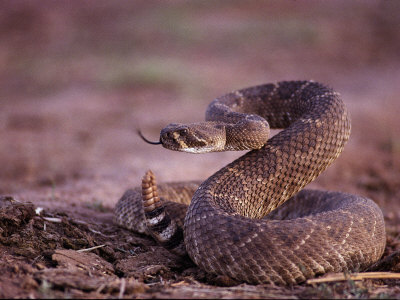Rattle snakes get their name from the dead tissue that collects on the end of their tail. Every time they shed their skin, they add another ring to it. The dead tissue or rattle on their tails is used as a warning to animals bigger than the snake, like humans. The rattle on it's tail can be heard from 146 meters or 480 feet away, and is as loud as an alarm clock. So with those to factors if you still walk into one with advanced warning, I don't feel sorry for you if you get bitten.

Eastern Diamondback Rattlesnake
Now as far as dangerous goes, the eastern diamond back rattle snake is the most dangerous in North America, and the second most dangerous is the one I'm doing for Angie, the western diamond back or Texas rattler as she calls it. Most snakes come with several nicknames, it all depends on where you are, as to what the locals call it, in California, we call it the fierce snake, and in Mexico it's the desert diamond back rattle snake. But regardless of it's nick name it's still the western diamond back rattle snake.

Western Diamondback Rattlesnake
Now if you get bitten, you need to seek immediate medical attention, death is not super common with them but amputation of the injected body part is. Try and remember, rattle snakes are pit vipers, and I told you that all pit vipers are dangerous in earlier posts, so listen for the rattle. If you see one back away slowly, it very aggressive when it feels threatened, so don't scare it and make it bite. And if you ignore this advice just remember, you were warned.